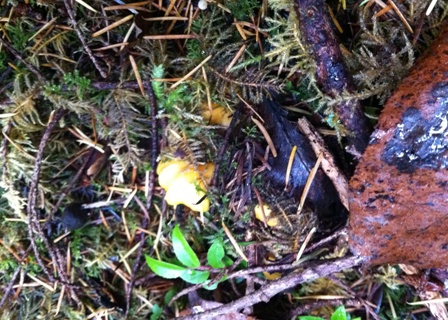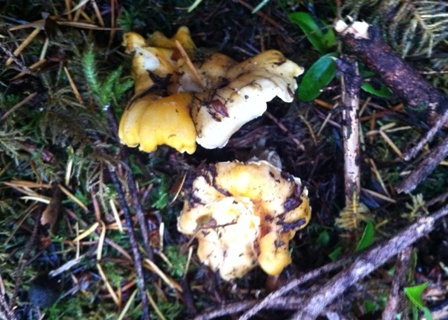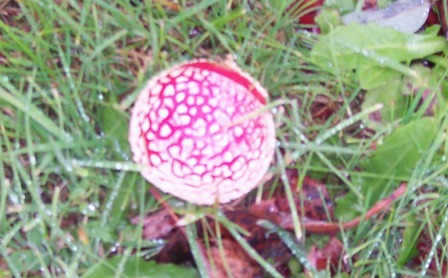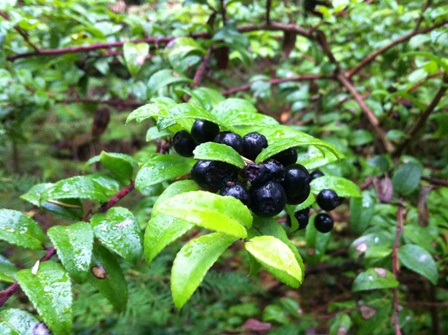While you have probably seen them exploding out of the ground for weeks now, it’s not too late to go on the best kind of treasure hunt—scouring the forest floor for mushrooms. Our dry September got the mushrooming season off to a slow start, but recent rains have brought a wide variety of fungal fruits to the surface, including tasty chanterelles (Cantharellus spp.). And as long as our mild weather continues, they’ll continue to pop up.
Mushrooms are the fruit of meandering fibrous bodies called mycelia, which remain largely hidden from view in their vast underground networks. You may have encountered a mycelium’s white, hair-like tendrils under an old log or while digging in the garden. Certain types of mycelia and certain trees have developed relationships that help mushroom hunters with identification—they come to expect specific mushrooms under their corresponding trees.
Chanterelles (vase- or trumpet-shaped with wavy edges when mature, and gills that extend down the stalk) like conifers, and are often partially hidden by moss or under the edges of salaland other shrubs in island forests. For golden chanterelles (C. cibarius, formosus,cascadensis) look for telltale hints of bright orange—hidden gold.
As these before-and-after photos show, sometimes only a small portion of the mushroom is visible…attentive, persistent hunting pays off. White chanterelles (Cantharellus subalbidus) are also common here, and are equally as edible. They look like other chanterelles except for their dull white color. A few mushrooms that are sometimes confused with chanterelles but are inedible are: Chroogomphus tomentosus and Hygrophoropsis aurantiaca.
Important: Never eat a mushroom if you are not absolutely sure of its identity. If you’re new to mushroom-collecting, we recommend double-checking your ID with an expert. Always remember the mushroomers’ mantra: “When in doubt, throw it out.”
Mushrooming with kids:
· Mushroom observing can be just as exciting as mushroom foraging. Kids are enticed by the surprising variety of mushroom shapes and colors. Give them a camera and have them take photos of as many different kinds as they can find.
Older children can try to find their mushrooms subjects in a field guide. (We recommend the humorous and information-packed pocket starter guide, “All That the Rain Promises, and More…” by David Arora. We also like the more complete, but more serious guide to regional mushrooms “Mushrooms of the Pacific Northwest” by Steve Trudell and Joe Ammirati.)
· Spore color is a defining characteristic for many mushrooms, and kids can make spore prints of specimens you take home. To make a spore print, cut off the mushroom stalk near the cap and place the cap underside-down on a sheet of half dark and half white paper (so either dark or light spores will show up). Cover the mushroom cap with a glass bowl. It can take several hours or overnight for enough spores to fall onto the paper to make a good print. Older children can use the spore color as another piece of information to aid in their identification quest. Younger children can make art pieces or cards with their prints.
If kids tire of mushroom hunting, they’re likely to be happily diverted by an evergreen huckleberry (Vaccinium ovatum) bush, often found in mushroom-laden areas. These sweet berries ripen in the fall and stay on the bushes throughout winter—some say they’re tastiest after the first frost.
Disclaimer: Vashon Nature Center is not responsible for how you use naturalist information presented in its publications. Please be aware of the extent of your abilities in interpreting and using this information and consult an expert when needed.





Great site !